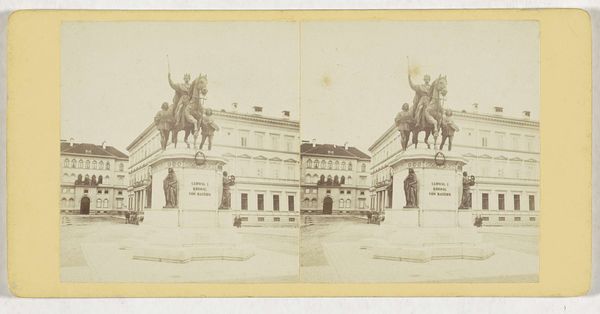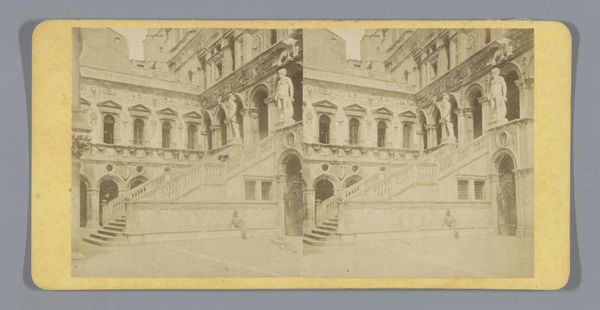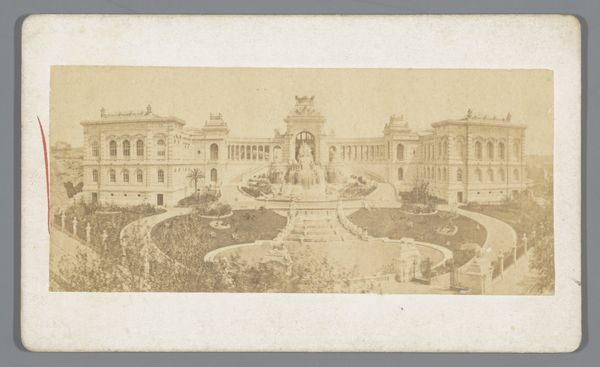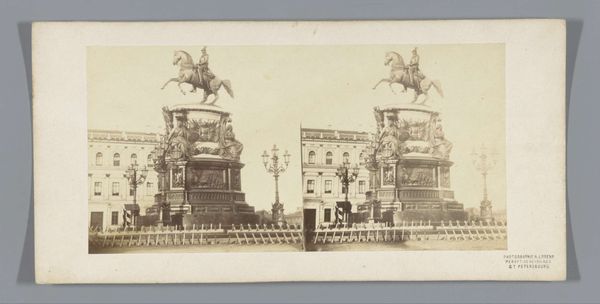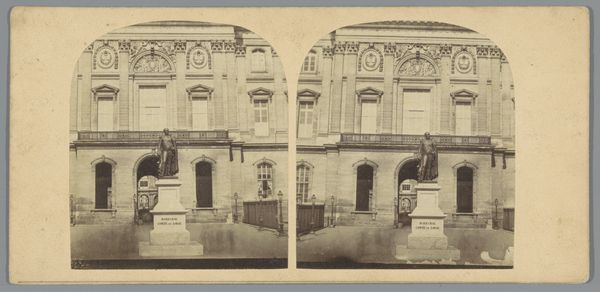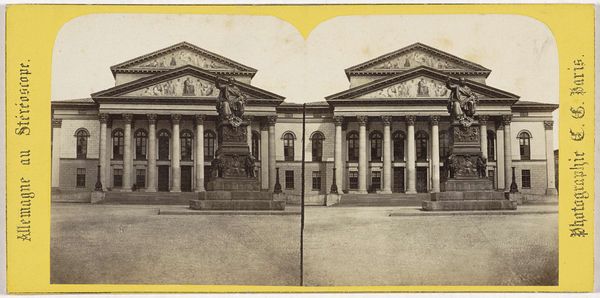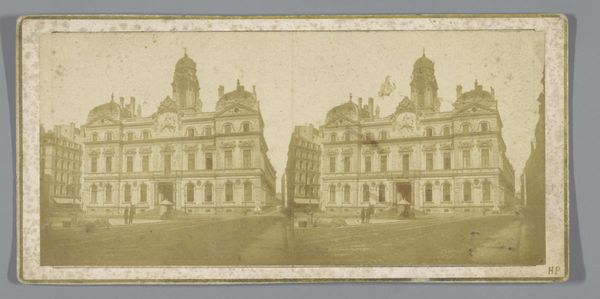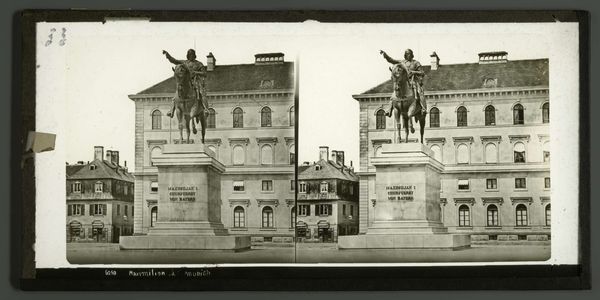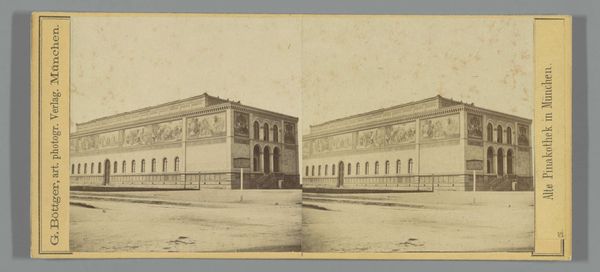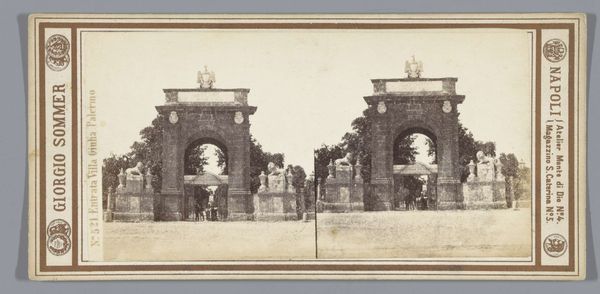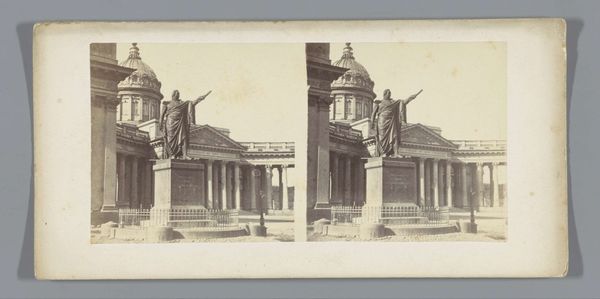
Dimensions: height 85 mm, width 170 mm
Copyright: Rijks Museum: Open Domain
Editor: Here we have a photograph from circa 1860-1885, titled “Equestrian statue of King Ludwig I of Bavaria in Munich,” made by Georg Böttger. It's a gelatin silver print, presented almost like a stereoscopic image. The crispness of the photograph emphasizes the statue’s grand scale within the cityscape, almost isolating the scene. What stands out to you? Curator: This photograph fascinates me because it's not simply a depiction of a monument, but an artifact of production. Look closely at the process. Böttger meticulously created a reproducible image of power, a commodity intended for mass consumption. How does the choice of gelatin silver printing, a relatively new technology at the time, democratize the image of King Ludwig? Editor: Democratize? That’s an interesting choice of words, given who’s being depicted! Curator: Exactly! Consider the labor involved in producing these prints. Were these luxury items only afforded by the bourgeois, or widely accessible mementos? This connects directly to the rise of photography as both an art form and a tool of social documentation and control. Think about it—photography, even then, could be used to reinforce existing hierarchies. Editor: So you’re saying the photograph itself, the very material and method of its creation, challenges the inherent authority of the equestrian statue? Curator: Precisely! The photographic print flattens the king into a readily available, reproducible object. How does this affect the viewer’s relationship to the monument, to the king, to power itself? The materiality raises these critical questions. Editor: I hadn't thought of it that way. Seeing it as more than just an image, but as an object of production that interacts with social structures, gives me a whole new appreciation. Curator: And for me, thinking about the distribution of these prints – where they ended up, who owned them – provides an additional layer to its interpretation. The photograph’s life beyond its creation informs its meaning just as much as its initial intention.
Comments
No comments
Be the first to comment and join the conversation on the ultimate creative platform.


